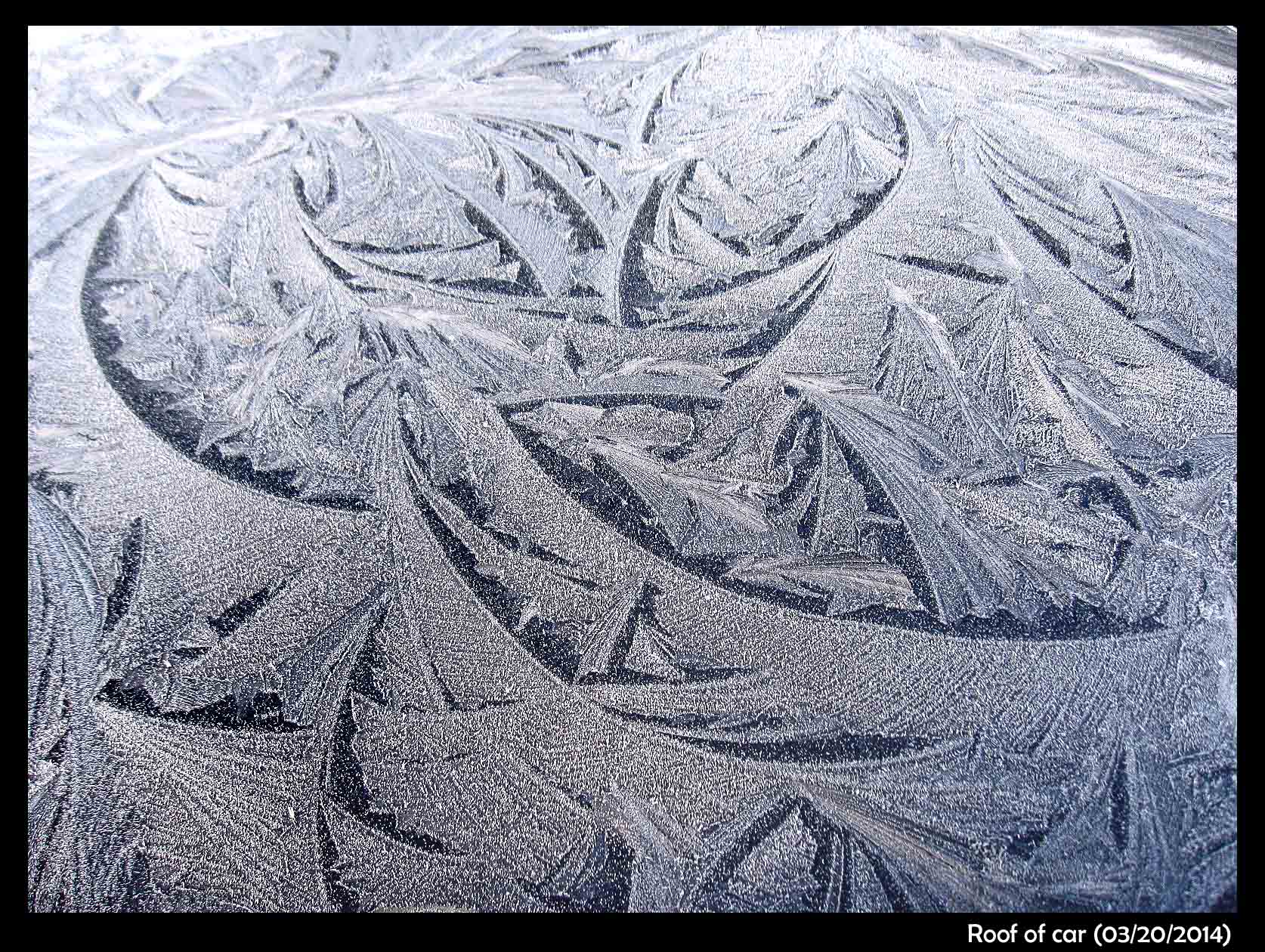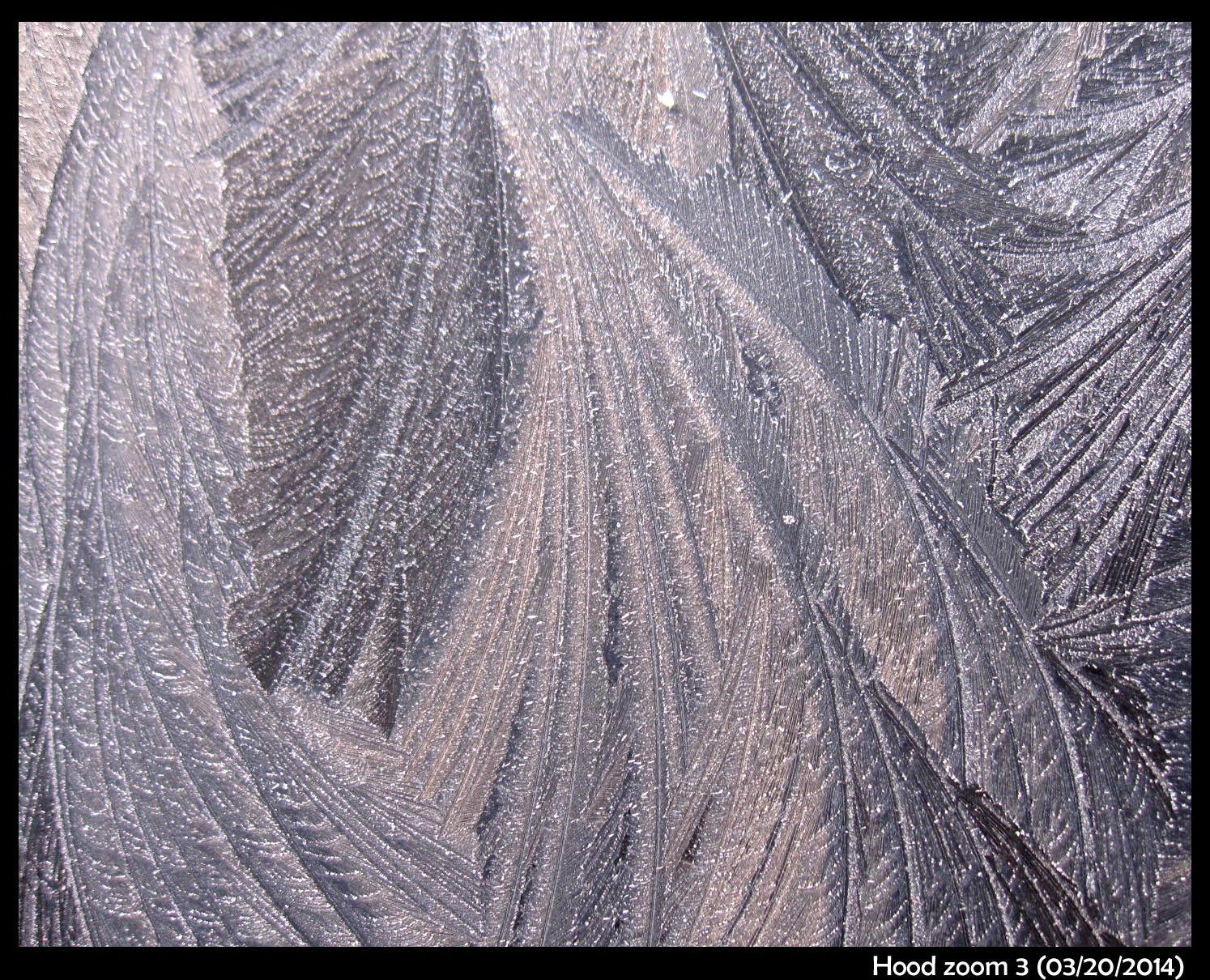| « The fun of shooting down your own theories | Video of growing ice spike » |
Equinox frost I: Patterns on roof, hood, window, and mirror
Morning on the spring equinox, the first day of spring, brought a few gifts from winter. I) Film-frost, accentuated with hoar-frost on the cars.
See the white of the hoar, following a pattern set down by the thin layer of film-frost. The roof of one car:
And the roof of another:
So it went. As I walked through our parking area, I saw a different pattern on every car - a pattern that told a tale of the night's weather and evening conditions. The film frost here is dramatic because the water film was thick before it froze. And it was thick because it had been raining in the previous evening. Later that evening, the skies cleared, and the temperature dropped rapidly, ensuring that the thick film would freeze. And the warm wet weather of the previous day left plenty of vapor to deposit as hoar-frost.
Car hoods had their own story to tell:
Zooming in on the above hood pattern:
Zooming in a bit more:
A bit more:
And more:
Looking at a windshield, one can see that the curvy lines generally require thicker water films. Here, the lines are more prominent where a droplet streaked down, leaving a thicker water film:
Here is another observation. I have only seen the "striped-tail frost" on glass; for example on this moon-roof:
One feature of this pattern, which appears much clearer in previous photos I've posted, is the periodic dark regions (the stripes). This is similar to the bulls-eye pattern that I described in the post "Crystal communications...", and a key part of the process was the thermal gradients. Such gradients are stronger on a material like glass with its low thermal conductivity, than on a metal. I think the thermal gradients are important here too, and this is why the patterns I've seen have all been on glass.
On the plastic casing of my side-view mirror, I saw a different curvy pattern:
Patterns on plastic are different than patterns on metal and glass. This might partly be because water does not build up into a film as readily as it does on glass and metal.
-JN









